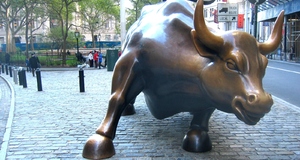Featured Article:Capital Controls in Emerging Market Economies: Comparing Their Use and Effectiveness in Five Countries
By
2015, Vol. 7 No. 03 | pg. 4/4 | « Implications of the IMF's Shift in PolicyIn light of these emerging market economies that have instituted various forms of capital account restrictions over the years, the recent IMF shift in policy with regards to the use of capital controls has drawn both support and opposition. While emerging market economies that implement these capital controls have encouraged the IMF’s policy change, there are numerous countries that still believe that capital market restrictions do more harm than good. Foremost among the proponents of capital controls is Brazil, a country that implemented numerous capital controls in the years following the financial crisis—most often in the form of taxes—in order to control large inflows of capital into the country. On the other hand, opponents of capital market restrictions maintain the view that there are other more effective measures that can be taken than the use of these controls. Countries that support the use of capital controls—such as Brazil, Thailand, and South Korea—have reaffirmed their beliefs in the effectiveness of these restrictions in light of the recent financial crisis. Some nations in particular—two prominent ones being Brazil and India—have been especially vocal in their disapproval of loose monetary policies in the U.S., EU, and Japan that have led to speculative inflows from foreign investors into developing countries’ asset markets.These inflows have resulted in volatility that these developing countries have then implemented capital controls in order to manage (The Hindu Staff, 2013). In spite of the IMF’s policy shift, a Brazilian representative to the IMF said the organization was still too restrictive in its recommendations. The representative argued that capital controls should be considered a standard component of policymakers’ toolkits rather than a last resort as the IMF suggests. Nogueira Batista, the executive director for Brazil and 10 other countries on the IMF’s board, says that the IMF has not sufficiently realized the extent to which large and unstable capital flows can harm recipient countries (Beattie, 2012). India is another country that approves of the IMF’s new direction on policy recommendations pertaining to the use of capital account restrictions. Since India is one of the world’s leading emerging market economies, its use of capital controls has been highlighted on numerous occasions for why a country should be allowed to implement these restrictions on capital flows. India has used capital controls to counter the adverse effects resulting from short-term surges and ebbs. India views the Fund’s new stance on capital controls as a move in the correct direction, since the IMF appears to be more accommodative of opposing views and the ‘one-size-fits-all’ approach seems to have been unsupported by events following the financial crisis—at least according to India and other emerging market economies (The Hindu Staff, 2013). In recent years, some studies have linked the use of capital controls for inflows and practical regulations in emerging market countries to the existence of safer external liability structures and economic resilience during the financial crisis. These studies suggest that some emerging market economies might benefit from implementing well-targeted and temporary capital inflow restrictions in an attempt to combat disruptive surges and ebbs of capital flows. However, these studies also found that gradually liberalizing capital accounts and properly using other policies and reforms could help developing countries reduce macroeconomic risks and experience financial stability (Brockmeijer, Martson, and Ostry, 2012, p. 6). Accordingly, even though the IMF has approved the institution of capital controls to prevent and alleviate financial crises under certain circumstances, it is important to understand that capital account restrictions should not be used in lieu of a comprehensive package of macroeconomic and financial policies. Capital controls are just one of many measures that countries can consider when they are faced with problems stemming from capital volatility (Flowers, 2011). This conclusion is reinforced by many studies that have found that at best, there may be weak evidence supporting the effectiveness of using capital controls to decrease the volume of capital flows and allow countries to enact monetary policy more freely. The case study of Malaysia in 1998 is an exception since controls were used in the country in order to respond to a crisis (Brockmeijer, Martson, and Ostry, 2012, p. 6). Furthermore, the IMF recommends that if capital controls are to be used, they should target capital inflows rather than outflows and both domestic and foreign investors should be treated equally. This latter goal can be achieved by using measures such as banking supervision rather restrictions on capital movement based on investors’ residence. The explanation for why controls on capital outflows are more disruptive to countries’ economies than controls on capital inflows is that countries with restrictions on outflows often struggle to attract inflows, since investors are wary committing their funds in countries where they may not be able to recover their money. Therefore, even though the Eurozone crisis has demonstrated the negative consequences that could arise from allowing capital to move freely without having a well-regulated financial system in place, it would be better to improve controls and move toward banking and fiscal unity rather than to limit cross-border capital flows (Beattie, 2012). Finally, a major implication of the IMF’s policy reversal on capital controls is that emerging market investments have become more risky and in turn, there has likely been a new cost imposed on the global economy since these capital account restrictions may force investors to pay an artificial premium to participate in emerging markets. Moreover, if particular controls are instituted in order to prevent capital outflows, investors may find their money trapped in emerging markets. As a result, while excess capital flows are a challenging issue for countries to address, the solution imposed should not involve the use of more regulations that further restrict the activities of investors (Hutchinson, 2012). If other softer policy tools could be used by emerging market economies instead, then it would be preferable to go forward with these other measures. The high administrative costs associated with implementing capital controls in addition to the negative impact that these restrictions may have on a country’s financial markets should be carefully weighed before a country decides to use controls (Haberer et al., 2012). Conclusions and Suggestions for Future ResearchAs my findings show, the five case studies involving emerging market economies—Brazil, Chile, Thailand, Malaysia, and India—each show how different countries have used capital controls over various time periods. These controls also vary by type and duration, as have their effectiveness. A majority of the results from the case studies reinforce support for capital account liberalization, though there are aspects of the Malaysian case study that appear to be more ambiguous in terms of the impacts that the country’s controls have had on its economy. Nevertheless, the general consensus that controls on capital inflows, while inefficient, are less harmful than controls on capital outflows is supported by the example of the Thai capital controls on outflows. Additionally, while it appears as though Malaysia’s controls on outflows did not have the catastrophic impact that many economists had predicted, it is also important to consider the fact that Malaysia’s controls were implemented over a year after the Asian financial crises had begun and the country was already on a path to recovery by the time of the controls. Evidence supports the claim that Brazil’s use of capital controls was not effective in decreasing the scale of inflows into the country and it appears that Brazil was somewhat successful in avoiding further declines in capital inflows when the country raised its controls. Chile’s intervention in its currency markets following the 2008 financial crisis did not appear to have a lasting effect on the country’s economy as the government had hoped. Exchange rate volatility did not stabilize, asset prices were not impacted in the long-term, the volume and composition of capital inflows were not influenced in a statistically significant way, and Chile was not able to insulate its monetary policy. Thailand’s capital controls enabled it to reduce the overall volume of flows, but it caused an increase in exchange rate volatility and asset prices continued to rise. Meanwhile, Malaysia did attain an increase in stability of its interest rates and exchange rates as well as monetary autonomy following its imposition of controls, but it is not certain that the controls caused the country’s economy to recover. Similarly, capital controls enabled India to maintain exchange rate stability and monetary autonomy, but they had a negative impact on the country’s economic growth. With respect to the IMF’s official endorsement of using capital controls under particular circumstances, it is still too early to determine what will be the outcome of this shift in policy stance. However, I suspect that the IMF may have changed its opinion too quickly and opened the door for future uses of capital controls that may prove harmful to emerging markets’ economies, especially if those controls are aimed at manipulating capital outflows. While many emerging market economies are advocating using capital account restrictions to protect themselves from volatile cross-border flows, there is a strong likelihood that the IMF’s position change may prove to be calamitous for the countries that use controls, especially on capital outflows and for extended periods of time. Nevertheless, since the IMF’s policy reversal on capital controls occurred relatively recently, it would be useful for future studies to examine the effect of this change once more data on the subject becomes available. A better understanding of how emerging market economies use capital account restrictions will enable researchers to better assess the potential effects of these controls as they occur. Therefore, future studies should analyze the use of capital controls following the financial crisis and evaluate how the IMF’s new stance on controls influences countries that are considering restrictions on capital flows. Perhaps these future inquiries will shed more light on the potential advantages and disadvantages of the use of capital controls by emerging market economies. ReferencesAbdelal, Rawi and Laura Alfaro (2003, July-August). “Capital and Controls: Lessons from Malaysia.” Challenge, 46(4): 36-53. Retrieved from http://papers.ssrn.com/sol3/papers.cfm?abstract_id=1096171. Allen, Kate (2013, Aug. 19). “Back to the Future: Is India Heading Towards another Balance of Payments Crisis?” The Financial Times. Retrieved from http://blogs.ft.com/ftdata/2013/08/19/back-to-the-future-is-india-heading-towards-another-balance-of-payments-crisis/. Ariyoshi, Akira, Karl Habermeier, Bernard Laurens, Inci Otker-Robe, Jorge Iván Canales Kriljenko, and Andrei Kirilenko (2000, May 17). “Capital Controls: Country Experiences with Their Use and Liberalization.” Occasional Paper 190. Retrieved from http://www.imf.org/external/pubs/ft/op/op190/. Arteta, Carlos, Barry Eichengreen, and Charles Wyplosz (2001, August). “When Does Capital Account Liberalization Help More Than It Hurts?” NBER Working Paper 8414. Retrieved from http://www.nber.org/papers/w8414.pdf?new_window=1. Athukorala, Prema-Chandra and Sarath Rajapatirana (2003, April). “Capital Inflows and the Real Exchange Rate: A Comparative Study of Asia and Latin America.” The World Economy, 26(4): 613-637. Retrieved from http://papers.ssrn.com/sol3/papers.cfm?abstract_id=418958. Baumann, Brittany A. and Kevin P. Gallagher (2012, June). “Navigating Capital Flows in Brazil and Chile.” Initiative for Policy Dialogue Working Paper Series. Retrieved from http://policydialogue.org/files/publications/Working_Paper-Navigating_Capital_Flows_in_Brazil_and_Chile.pdf. Beattie, Alan (2012, Dec. 3). “IMF Drops Opposition to Capital Controls.” Financial Times. Retrieved from http://www.ft.com/intl/cms/s/0/e620482e-3d5c-11e2-9e13-00144feabdc0.html#axzz2QgxwIG4x. Brockmeijer, Jan, David Marston, and Jonathan D. Ostry (2012, March 16). “Liberalizing Capital Flows and Managing Outflows- Background Paper.” IMF Policy Paper. Retrieved from http://www.imf.org/external/np/pp/eng/2012/031612.pdf. Brunnermeier, Markus K., José De Gregorio, Philip Lane, Hélène Rey, and Hyun S. Shin (2012, Oct. 7). “Banks and Cross-Border Capital Flows: Policy Challenges and Regulatory Responses.” VOX. Retrieved from http://www.voxeu.org/article/banks-and-cross-border-capital-flows-policy-challenges-and-regulatory-responses. Callen, Timothy and Paul Cashin (2002) “Capital Controls, Capital Flows and External Crises: Evidence from India.” The Journal of International Trade & Economic Development: An International and Comparative Review, 11(1): 77-98. Retrieved from http://www.tandfonline.com/doi/abs/10.1080/09638190110093172#.UpaUjsRDtlo. Coelho, Bruno and Kevin P. Gallagher (2010, January). “Capital Controls and 21st Century Financial Crises: Evidence from Colombia and Thailand.” Political Economy Research Institute Working Paper Series Number 213. Retrieved from http://www.peri.umass.edu/fileadmin/pdf/working_papers/working_papers_201-250/WP213.pdf. Cooper, Richard N., Daniel K. Tarullo, and John Williamson (1999). “Should Capital Controls be Banished?” Brookings Papers on Economic Activity, 1: 89-141. Retrieved from http://www.jstor.org/stable/2534663. Corden, Warner Max (2002). Too Sensational: On the Choice of Exchange Rate Regimes. Cambridge, Mass.: The MIT Press. Cowan, Kevin and José De Gregorio (2007). “International Borrowing, Capital Controls, and the Exchange Rate: Lessons from Chile.” 241-296 in Edwards, Sebastian (ed.), Capital Controls and Capital Flows in Emerging Economies: Policies, Practices and Consequences. Chicago: The University of Chicago Press. De Gregorio, José and Felipe Labbé (2011, August). “Copper, the Real Exchange Rate And Macroeconomic Fluctuations in Chile.” Central Bank of Chile Working Papers Number 640. Retrieved from http://www.bcentral.cl/estudios/documentos-trabajo/pdf/dtbc640.pdf. Doraisami, Anita (2004). “From Crisis to Recovery: The Motivations for and Effects of Malaysian Capital Controls.” Journal of International Development, 16: 241–254. Retrieved from http://onlinelibrary.wiley.com/doi/10.1002/jid.1073/abstract. Edison, Hali J. and Carmen M. Reinhart (2000, March). “Capital Controls during Financial Crises: The Case of Malaysia and Thailand.” Federal Reserve Board of Governors International Finance Discussion Papers Number 662. Retrieved from http://www.federalreserve.gov/pubs/ifdp/2000/662/ifdp662.pdf. Edwards, Sebastian (1998, November). “Capital Flows, Reach Exchange Rates, and Capital Controls: Some Latin American Experiences.” NBER Working Paper 6800. Retrieved from http://www.nber.org/papers/w6800. _____ (1999, November). “How Effective are Capital Controls?” NBER Working Paper 7413. Retrieved from http://www.nber.org/papers/w7413.pdf. _____ (2001, January). “Capital Mobility and Economic Performance: Are Emerging Economies Different?” NBER Working Paper 8076. Retrieved from http://www.nber.org/papers/w8076.pdf. _____ (2007). “Introduction.” 1-15 in Edwards, Sebastian (ed.), Capital Controls and Capital Flows in Emerging Economies: Policies, Practices and Consequences. Chicago: The University of Chicago Press. Flowers, Andrew (2011, September). “The Pros and Cons of Capital Controls.” Federal Reserve Bank of Atlanta. Retrieved from http://www.frbatlanta.org/podcasts/transcripts/econsouthnow/110929_gallagher.cfm. Forbes, Kristin J. (2005, May). “The Microeconomic Evidence on Capital Controls: No Free Lunch.” NBER Working Paper 11372. Retrieved from http://www.nber.org/papers/w11372.pdf?new_window=1. Forbes, Kristin J. and Francis E. Warnock (2012, August). “Capital Debt -and Equity- Led Capital Flow Episodes.” Central Bank of Chile Working Paper Number 676. Retrieved from http://www.bcentral.cl/estudios/documentos-trabajo/pdf/dtbc676.pdf. Gallego, Francisco, Leonardo Hernández, and Klaus Schmidt-Hebbel (1999, December). “Capital Controls in Chile: Effective? Efficient?” Central Bank of Chile Working Papers. Retrieved from http://www.academia.edu/3386582/Capital_controls_in_Chile_effective_Efficient. Garcia, Marcio (2013, March 1). “Brazil: Did Inward Capital Controls Work?” VOX. Retrieved from http://www.voxeu.org/article/brazil-did-inward-capital-controls-work. Glick, Reuven and Michael Hutchinson (2002, Dec. 16). “Capital Controls and Exchange Rate Instability in Developing Countries.” Pacific Basin Working Paper No. PB00-05. Retrieved from http://www.frbsf.org/publications/economics/pbcpapers/2000/pb00-05.pdf. Goh, Soo Khoon (2005). “New Empirical Evidence on the Effects of Capital Controls on Composition of Capital Flows in Malaysia.” Applied Economics, 37(13): 1491-1503. Retrieved from http://www.tandfonline.com/doi/abs/10.1080/00036840500118952#.UpaZhMRDtlo. Haberer, Sofia, Lekhalis Leang Seap, Katharina Nowak, and Julia Lux (2012, Nov. 26). “The Pros and Cons of Capital Controls.” Paris School of Economics. http://www.parisschoolofeconomics.com/benassy-quere-agnes/Enseignement/Poleco2013-presentation7.pdf. The Hindu Staff (2013, April 15). “Common Sense on Capital Flows.” The Hindu. Retrieved from http://www.thehindu.com/opinion/editorial/common-sense-on-capital-flows/article4617461.ece. Hutchinson, Martin (2012, Dec. 7). “The IMF's Change on Capital Controls Adds Danger for Emerging Market Investors.” Money Morning. Retrieved from http://moneymorning.com/2012/12/07/the-imfs-change-on-capital-controls-adds-danger-for-emerging-market-investors/. Hutchinson, Michael M., Gurnain Kaur Pasricha, and Nirvikar Singh (2012). “Effectiveness of Capital Controls in India: Evidence from the Offshore NDF Market.” IMF Economic Review, 60(3): 396-438. Retrieved from http://www.palgrave-journals.com/imfer/journal/v60/n3/abs/imfer201211a.html. Jinjarak, Yothin, Ilan Noy, Huanhuan Zheng (2013, July). “Capital Controls in Brazil – Stemming a Tide with a Signal?” NBER Working Papers Series. Working Paper 19205. Retrieved from http://www.nber.org/papers/w19205. Johnson, Simon, Kalpana Kochhar, Todd Mitton, and Natalia Tamirisa (2007). “Malaysian Capital Controls: Macroeconomics and Institutions.” 529-574 in Edwards, Sebastian (ed.), Capital Controls and Capital Flows in Emerging Economies: Policies, Practices and Consequences. Chicago: The University of Chicago Press. Jomo K.S. (2002, January-March). “Capital Controls: The Experience of Malaysia.” World Economics, 3(1): 125-143. Retrieved from http://relooney.fatcow.com/CapitalControls.pdf. Joshi, Vijay (2001). “Capital Controls and the National Advantage: India in the 1990s and Beyond.” Oxford Development Studies, 29(3): 305-320. Retrieved from http://www.tandfonline.com/doi/abs/10.1080/13600810120088886?journalCode=cods20#.UpaUxMRDtlo. Klein, Michael W. (2012). “Capital Controls: Gates versus Walls.” NBER Working Paper No. 18526. Retrieved from http://www.nber.org/papers/w18526. Kletzer, Kenneth M. (2004). “Liberalizing Capital Flows in India: Financial Repression, Macroeconomic Policy, and Gradual Reforms.” 227-263 in Bery, Suman, Barry Bosworth, and Arvind Panagariya (eds.), India Policy Forum 2004. Washington, DC: Brookings Institution Press. Retrieved from http://www.brookings.edu/~/media/research/files/articles/2004/3/india%20policy%20forum/2004_kletzer.pdf. Neely, Christopher J. (1999, November-December). “An Introduction to Capital Controls.” Review- Federal Reserve Bank of St. Louis. Retrieved from http://research.stlouisfed.org/publications/review/99/11/9911cn.pdf. Ostry, Jonathan D., Atish R. Ghosh, Karl Habermeier, Marcos Chamon, Mahvash S. Qureshi, and Dennis B.S. Reinhardt (2010, Feb. 19). “Capital Inflows: The Role of Controls.” IMF Staff Position Note. Retrieved from http://www.imf.org/external/pubs/ft/spn/2010/spn1004.pdf. Patnaik, Ila and Ajay Shah (2012, Nov. 20). “Did the Indian Capital Controls Work as a Tool of Macroeconomic Policy?” VOX. Retrieved from http://www.voxeu.org/article/did-indian-capital-controls-work-tool-macroeconomic-policy. Rastello, Sandrine (2012, Dec. 3). “IMF Officially Endorses Capital Controls in Reversal.” Bloomberg. Retrieved from http://www.bloomberg.com/news/2012-12-03/imf-officially-endorses-capital-controls-in-reversal.html. Sivy, Michael (2011, Nov. 29). “How to Know When the Euro Crisis Reaches a Tipping Point.” TIME. Retrieved from http://business.time.com/2011/11/29/how-to-know-when-the-euro-crisis-reaches-a-tipping-point/. Stiglitz, Joseph E. (2004). “Capital-Market Liberalization, Globalization, and the IMF.” Oxford Review of Economic Policy, 20(1): 57-71. Retrieved from http://oxrep.oxfordjournals.org/content/20/1/57.full.pdf+html. Valdés-Prieto, Salvador and Marcelo Soto (1998, January). “The Effectiveness of Capital Controls: Theory and Evidence from Chile.” Empirica, 25(2): 133-164. Retrieved from http://link.springer.com/article/10.1023%2FA%3A1006992208022. Warr, Peter G. (1999, July). “What Happened to Thailand?” The World Economy, 22(5): 631- 650. Retrieved from http://onlinelibrary.wiley.com/doi/10.1111/1467-9701.00222/abstract. Wroughton, Lesley (2012, Dec. 3). “IMF Adopts View on Capital Controls, Emerging Countries Wary.” Reuters. Retrieved from http://uk.reuters.com/article/2012/12/03/uk-imf-capital-idUKBRE8B211B20121203. Suggested Reading from Inquiries Journal
Inquiries Journal provides undergraduate and graduate students around the world a platform for the wide dissemination of academic work over a range of core disciplines. Representing the work of students from hundreds of institutions around the globe, Inquiries Journal's large database of academic articles is completely free. Learn more | Blog | Submit Latest in Economics |


















